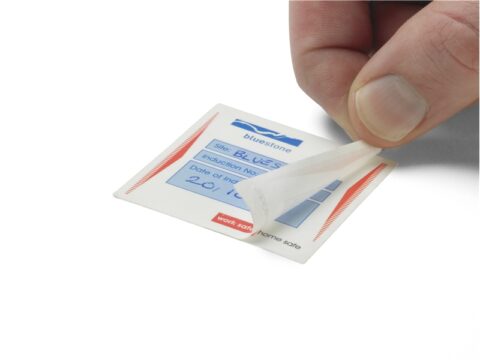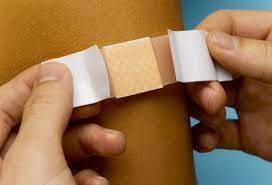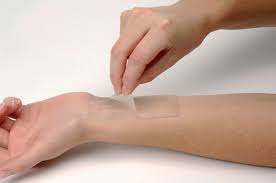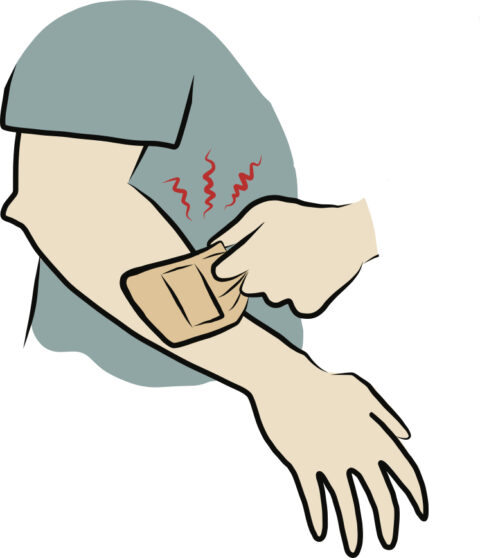
Medical Adhesive Testing Machine
Measuring the adhesion force of the medical label
DIN BS EN 1939: Self-adhesive tapes – Determination of peel adhesion properties
Self-adhesive tapes – Determination of peel adhesion properties
From orthodontic bandages to bandages to medical sensor pad gels, the term medical adhesive can be applied to any product used for adhesion in a medical application.
Medical adhesives can be classified by application and adhesion method.
Common applications include bandages, dental instruments, dental composites, wound closures, tissue repair, bone / screw tightening, prosthetic assembly and fittings, implant joints and joints, medical patches and medical sensor pads.
Adhesion method refers to how the adhesive is used and the bond is activated. For example, pressure-sensitive tapes (such as bandages) are attached to the skin by applying pressure. Other medical adhesives, such as those used in dental applications, are activated by heat or ultraviolet light.
Medical adhesives can be tested for structural strength, adhesion properties and environmental / chemical resistance. Structural strength tests include measurements of tensile / compression and elongation. Examples of such experiments in the medical field are the load resistance and compressive force of a plastic adhesive applied to a substrate (skin, ligament, muscle) or the extension of a self-adhesive band that wraps around an articular area and is applied.
Tests for adhesion properties include peel strength and adhesion, bond strength, lap shear, tack strength, friction and reusability of the adhesive. These tests are the most common and apply to almost all medical applications. These tests determine how hard the adhesive is applied and removed, how well it adheres to the substrate (skin, tissue, bone, implants, prostheses, etc.), and how long the product is able to retain its adhesive properties. (E.g. reuse of the band).
Different types of medical adhesives: Common types of these adhesives include: acrylic, silicone, polyurethane and bioadhesives. And they can be disposable (thermal adhesives and pressure adhesives) or reusable.
Medical adhesives are found in bandages, medical tapes, surgery, pharmaceuticals, and other wound care products.
Surgical instruments, biosensors, labeling electrodes, catheters and implantable devices.
Surgical Tape
Anti-allergy adhesive
Cloth surgical adhesive
Sticky glue
Angiocatheter adhesive can be used at the injection site of angiocytes, catheters or catheters,
Blood sampling glue or injection band-aid
Wound adhesive warns of infection
Advanced surgical adhesive
Soft Tissue Adhesive – Hard – Drug Release Systems – Adhesive Wetting Capability –
Internal limb adhesives – Cyanoacrylate – Fibrin – Polymerization rate – Strong bonding
New biomaterials
Bio adhesive
Viscoelastic properties
Dermabond- Indermil-
Internal tissue surgical adhesives
Polymeric bioadhesives
Bioadhesion
Mechanical engagement – adhesion mechanism
Connection of blood vessels
Close nasal wounds
Connecting equipment to tissue
Adhesion strength and cohesion
Skin adhesives – Types of bandages –
Skin pressure sensitive adhesives
Medical cyanoacrylate adhesives – fibrin adhesive
Polar Co-monomers in Acrylic Medical Grade
Surgical-commercial adhesive
Autologous and homologous adhesives
Fibrin adhesive applicator
PMMA- polymer
Single-stage adhesive system
cure at room temperature
Yield strength
Textured cyanoacrylate adhesives
Proper toughness – good toughness – high strength and tensile strength
Biomaterials-
Cardiovascular implants such as stents, blood vessels, heart valves, electroshocks and pacemakers
Parts used in the nervous system, such as nerve implants and prostheses used in the central nervous system and peripheral nervous system
– Orthopedic prostheses such as bone grafts, bone plates, fins and welding equipment
Stabilization equipment used in orthopedics such as interlocking screws in the ankle, knee and hand areas, fracture stabilizing rods and pins and screws and plates used in skull, jaw and face repair
Bone tissue engineering scaffolding for fractures and dental implants
Iron, chromium, cobalt, nickel, titanium, tantalum, molybdenum and tungsten are biodegradable metals commonly used in the manufacture of implants.
Composites – Tissue Engineering
Texture Analyzer -Texture Analyzer
Structural, non-structural adhesives and pressure sensitive adhesives
Chest lead
Chest lead is used to connect the wire of the heart monitor to the patient’s chest.
Medical dressing
Faratest Co supplies testing machines.
Tel: +98 21 88705040
Whatsapp & Telegram: +98 912 3750274









